A day in Paris
A day in Paris always seems like a journey into the past. This was my first visit since I went down to take some photos for Joanna almost exactly a year ago. On Thursday Susie and I went down from Chantilly for the day to meet up with Craig and the girls. There was a very slow-moving queue of people at the ticket office at the station, and one of the guichets shut up shop when we arrived. So we got on the train without tickets, and found seats with difficulty in a very crowded carriage. I remembered my first trip to France with Paul back in 1961. We were hitch-hiking, and ran out of money in the south of France; travelled without tickets [and without seats] on a very crowded train up from Marseille – France had just mobilised its reservists after some trouble in Berlin. And made a dash for it at the ticket barrier at the Gare de Lyon. Chantilly to Paris this time was less dramatic.
Big railway stations are noisy and sometimes unsafe. We threaded our way through the gang of cigarette sellers at the east end of the Gare du Nord, and found our way onto a balcony vert constructed between the rue d’Alsace and Platform 1 of the Gare de l’ Est. A conscious attempt by the city to smarten up a run-down bit of Paris. This is a smaller version of the better known Promenade Plantée, in the 12ème. This garden is named after a Brazilian feminist activist.
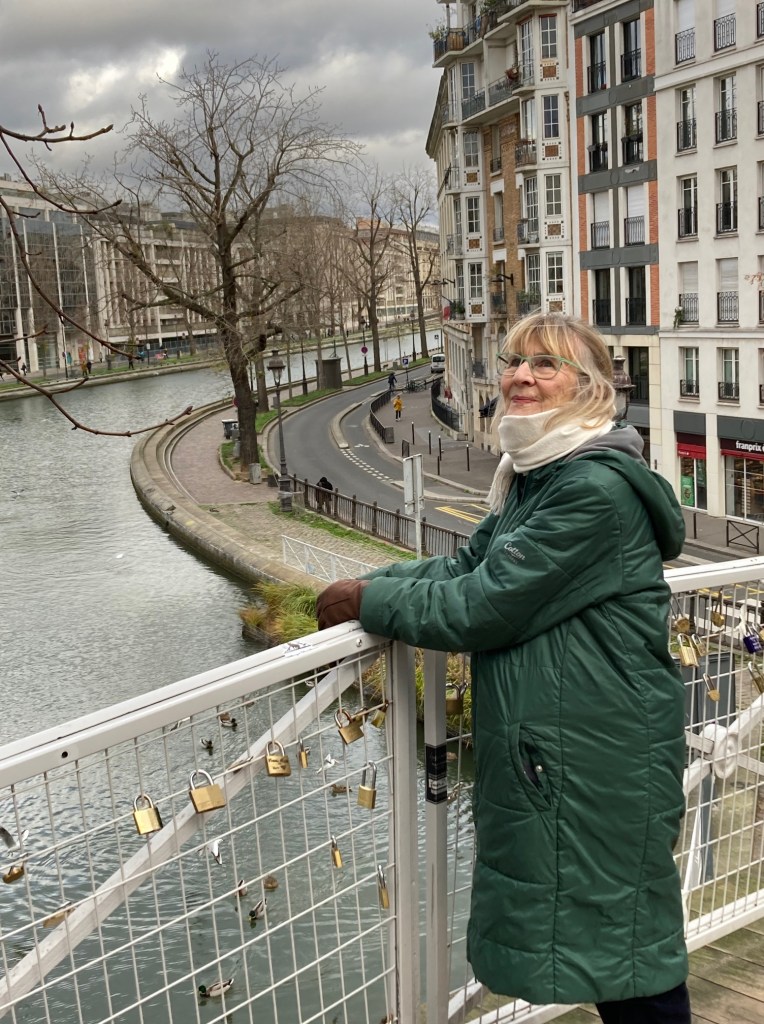
The Gare de l’Est is a handsome station, less confusing than the Gare du Nord. We had coffee at the big brasserie across the street. And then made our way on towards the Canal St Martin. This is one of my favourite corners of [not too touristy] Paris. For my twenty-first birthday I was given a cheap print of Buffet’s Canal St Martin, and it was years before I actually visited the canal. The print hangs today in our dining room in Edinburgh. We walked a block or two up the canal, and watched a black duck deal inefficiently with a large-ish fish. The fish was not enjoying it ! And we sat for ten minutes in the Jardin Villemin, in the rue Recollets. It is a gem of an open space between the Gare de l’Est and the Canal St Martin; laid out on the site of a former military hospital.
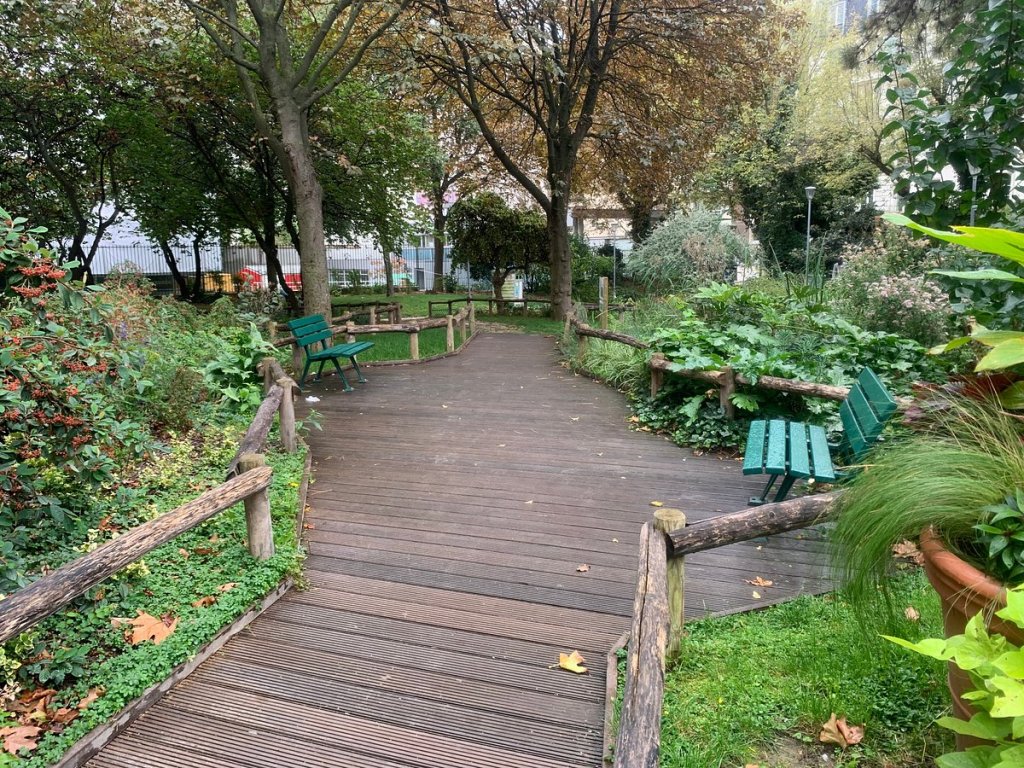
We met Craig and the girls for lunch at Bouillon Chartier. Which now has two additional branches in Paris other than in the Faubourg Montmartre. A new experience for the girls [Amelia’s preferred Chez Janou was closed] and a sentimental return for us. Just after 12.30pm the sizeable restaurant was almost full, the waiters working hard. Yellow wash walls, period advertisements and posters, big wall mirrors, paper tablecloths, bent-wood chairs. I had a generous portion of céleri remoulade. Followed by a pièce du boucher, which I felt had been cooking since Christmas Eve. Almost redeemed by a pepper sauce and chips. Followed by an excellent pruneaux au vin with vanilla ice-cream. The waiter did the addition on the table-cloth, and the bill was extremely modest.
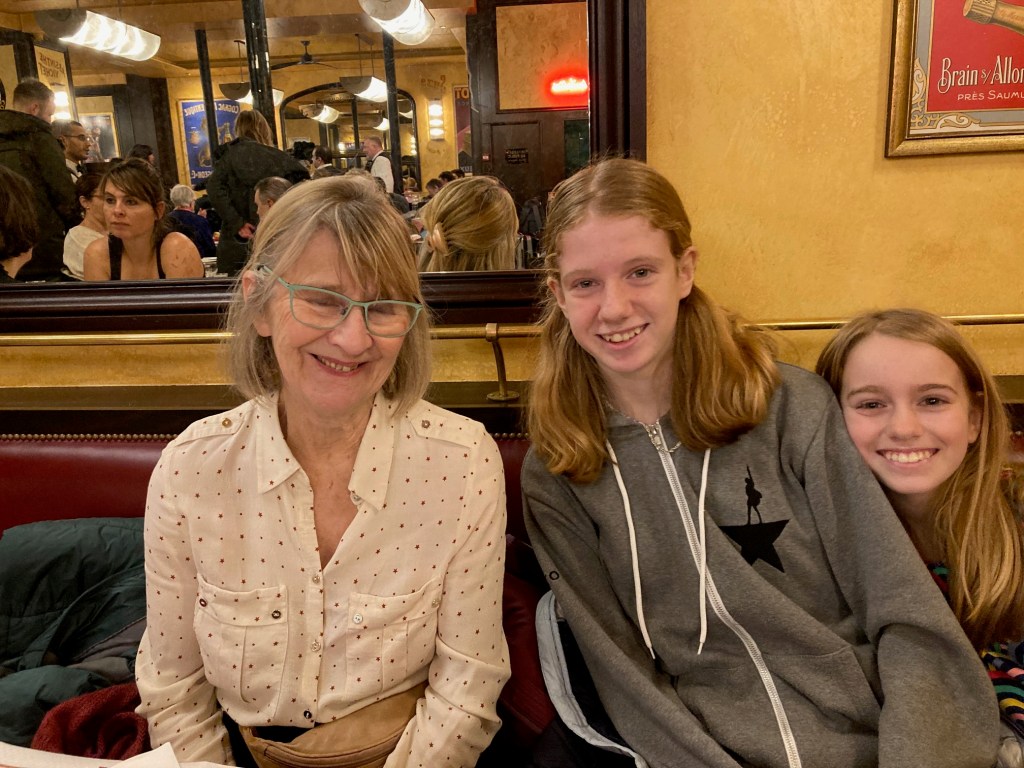
After lunch Susie and I took a 48 bus across town, down to Chatelet and across the river and up the boul’ Mich. After some indecision we got off at Denfert Rochereau and walked a bit along the now pedestrianised rue Daguerre. This is one of Paris’s great shopping streets. Which is where we shopped occasionally when we lived in the 14ème in the mid-1970s. With a very young Joanna, born not far away, in her push-chair. Which is much the same time that Agnès Varda made her 1974-75 documentary Daguerréotypes. Cheese shops, fruit and veg shops, a butcher, a florist, a high-class bakers, a clock repairman, and a handful of eating places. And then back to the Gare du Nord to wrestle with the ticket machine. Which wanted my e-mail address and my mobile phone number, and my grandmother’s blood group, as well as my credit card. And so comfortably home to Chantilly. While Susie slept on the train.
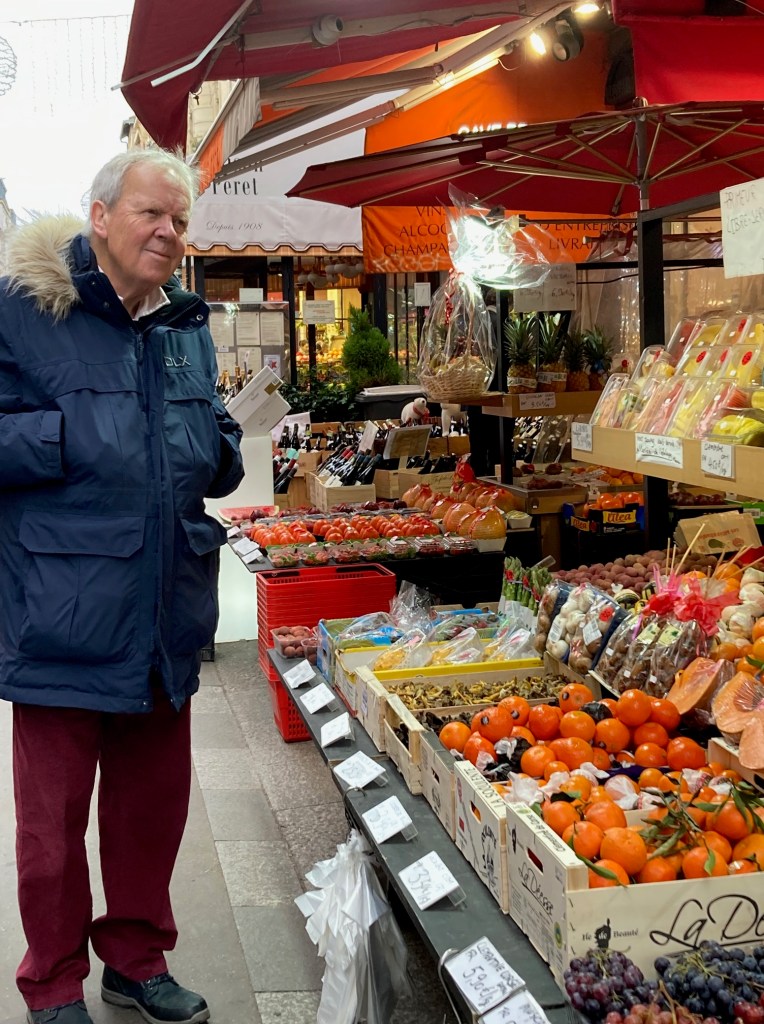
The Quest for Queen Mary
I have greatly enjoyed turning the pages of James Pope-Hennessy’s The Quest for Queen Mary , edited by Hugo Vickers, another chance find at the OXFAM bookshop in Edinburgh. It is the last book that I will read in 2023, and undoubtedly one of the funniest. Queen Mary [of Teck], the widow of George V, died at, the age of 85, at Marlborough House in March 1953. A few months before the coronation of Queen Elizabeth, her grand-daughter. I dimly remember an old lady in a hat who died while I was at primary school. And I gather from more recent reading, such as James Lees-Milne’s diaries, that Queen Mary was an enthusiastic art collector.And an inveterate kleptomaniac ! With a habit of pocketing pieces from the stately homes where she stayed.
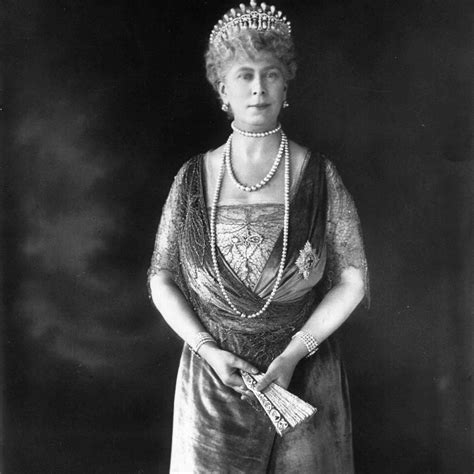
James Pope-Hennessy, then aged 38, brother of John and daughter of Una, was chosen as her official biographer. Pope-Hennessy was a friend of James Lees-Milne, who describes him as a social butterfly, an unreliable friend, and a rampant homosexual. During 1955-58 he interviewed a host of people who had known Queen Mary, including an asylum-load of minor European royalty. He kept extensive notes on the interviews. Which demonstrate very clearly that royalty are not the same as you and me. These are in effect the offcuts, which didn’t make the finished [much praised] biography; bizarre and endlessly amusing. There is a hilarious episode where Lees-Milne goes, rather nervously, to stay for the weekend with Prince Henry [of Gloucester], military man and onetime Governor of Australia. And another scene where the Queen passes dog biscuits for the corgis to an elderly and deaf relative. Who puts them in his mouth and eats them. You’ll have to read it for yourself to get the full flavour of the book.
St Peter’s, Chantilly
We are coming to the end of our six weeks here. The congregation have been tolerant and very welcoming; offering lunches, a double duvet and duvet cover, tea towels, champagne, home-made honey, chocolates, and home-made chocolate brownies. There were more people than I was expecting in church this morning; including Emily and Simon and family visiting from Milan, three visitors from Ohio, and two couples whom I didn’t recognise.
The gospel reading this morning was from Matthew 25, Jesus’s very challenging parable about the Sheep and the Goats. This is the last recorded teaching of Jesus in Matthew’s Gospel. We are dealing with judgement. And Jesus apparently says: ‘Forget everything else. If you failed to give to those in need, if you failed to offer hospitality to the homeless, then you are to be condemned to eternal punishment’.
Does that mean that: Your years of faithful church membership will be of no merit; your discipline of daily prayer and Bible reading will be of no avail; your years of service on the Church Council will not help you; your ALPHA course will have been in vain ? That you will stand condemned on the strength of failing to give money to the person begging at the traffic lights ? Even if that person is controlled by Eastern Europe mafia ?
Well, up to a post [Lord Copper]. But: Jesus’s words underline the important truth that – to love God means to love other members of God’s family. ‘And the second commandment is this: Love your neighbour as yourself.’ Meaning that we have a commitment to support and to pray for those members of the family who are in need.
It is a sad truth that churches are too often fractious and schismatic. I bought a book at last year’s big Advent Sale here in Chantilly, The Way of St Benedict by Rowan Williams. It took me a few months to get round to reading it. Rowan Williams points up the influence of the rule of St Benedict in the history of Western Europe. He says it is not exactly a rule; but rather a set of agreed guidelines for promoting common-or-garden faithfulness in community life. The key principles are: the monk must be transparent; the monk must be a peacemaker; and the monk must be accountable. The common life must be right before there can be any thought of any higher spiritual calling. We need to learn to become communities that outsiders want to join.
I think there is an important lesson there for the church; both globally and at a local level. Our common life, our relations with each other within the family, within the congregation, must be right before we can share our faith with the community we serve.
That might be the basis of a New Year Resolution for 2024.
December 2023